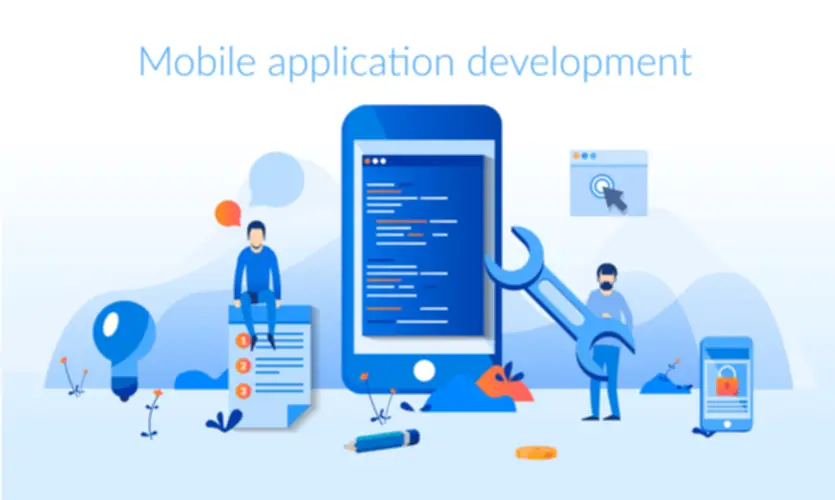What Is Containerisation? Definition & Benefits
Containers enable applications to run seamlessly across varied environments and working systems, lowering compatibility points and simplifying deployment processes. Discover resources and tools that can help you construct, deliver, and handle cloud-native functions and companies. Containers provide a light-weight encapsulation of any software, whether a standard monolith or a modular microservice. A microservice, developed inside a container, then features all of the https://www.globalcloudteam.com/ inherent advantages of containerization, similar to portability. Most importantly, containerization allows purposes to be “written once and run anywhere” across on-premises data middle, hybrid cloud and multicloud environments. As An Alternative of copying the hardware layer, containerization removes the working system layer from the self-contained surroundings.

However, before choosing the most effective containerized architecture, you want to keep in mind numerous components. If you need assistance with that, contact us and our experts might be pleased to supply their experience and support. A VM is a normal pc with an operating system, corresponding to a laptop computer, but it is virtual, with no physical illustration. You can do every thing on a VM that’s attainable on bodily hardware, e.g. connect by way of clouding, work on software, launch apps and video games. The idea of containerization and process separation has been around for some time – containers were first launched within the late Nineteen Seventies when Unix V7 was developed. Between 2001 and 2007, many companies, including Oracle, started investing in early Linux kernel technologies.
Containers & Containerization: A Beginner’s Information
Also, the container engine can leverage any OS safety isolation techniques—like SELinux entry control—to isolate faults within containers. Containers are “lightweight,” which means they share the machine’s working system kernel and don’t require the overhead of associating an working AI Agents system inside every software. Containers are inherently smaller in capability than VMs and require much less start-up time.

It acts as an intermediary agent between the containers and the working system, providing and managing resources that the applying needs. For instance, container engines can manage multiple containers on the identical working system by keeping them impartial of the underlying infrastructure and each other. The position of container orchestration platforms and instruments is to handle distributed, containerized apps at a large scale. Builders use container orchestration to regulate, schedule, and coordinate various components’ actions, distribute updates, monitor health, and institute recovery processes. Some container orchestration instruments wrap containers into constructions often recognized as pods. Computer Systems throughout the identical pod share computing sources while sustaining isolation from those in other pods.
Comparable to refactoring, new container-native purposes are sometimes constructed using microservices architectures, which allow for unbiased deployment of software components. Containerization has become an important a part of trendy software development practices, notably in microservices architectures and cloud-native functions. For example, Linux Namespaces helps to provide an isolated view of the system to every container; this contains networking, mount factors, process IDs, user IDs, inter-process communication and hostname settings. Namespaces can limit access to any of these resources through processes within every container. Typically, subsystems that do not have Namespace assist aren’t accessible from inside a container.
- Eager to reap all the benefits that containers bring to software program development and operations?
- This registry acts like a kind of ‘library’ or repository from which photographs may be downloaded and used to create containers.
- We consider Nutanix hyperconverged Infrastructure (HCI) is the perfect infrastructure basis for containerised workloads working on Kubernetes at scale.
- The 5 primary benefits of containerization include portability, effectivity, scalability, consistency, and isolation.
What Is Docker And Containerization?
The single software package, the container, is separate from the host working system. It turns into a stand-alone ecosystem and provides a portable computing surroundings capable of working across various platforms without any concern. Whereas container adoption is quickly outpacing the expansion of digital machines (VMs), containers likely won’t replace VMs outright.
Host Working System

Every containerized application is isolated and operates independently of others. The failure of 1 container does not affect the continued operation of some other containers. Growth teams can determine and correct any technical points within one container with none downtime in different containers.
Nevertheless, with containerization and adoption of Docker, Azure, and edge computing, Lindsay migrated its servers and functions to the cloud environment. Docker enabled the company to connect what is containerization over 450,000 IoT-enabled irrigation techniques worldwide and save more than seven hundred billion gallons of water. For instance, eBay began its operations with a monolithic software in 1995. Down the line, numerous points began popping up, forcing eBay to develop a set of microservices written in a quantity of programming languages.
For instance, they run the identical containers on Linux and Windows working systems. Builders also improve legacy software code to trendy versions using containers for deployment. Regardless Of the isolation, containers are light-weight because they share the host system’s kernel (the core of the operating system), and so they need not load a full working system stack as digital machines do. In common, containerisation know-how drives the pace and effectivity of application growth, whereas virtualisation drives the pace and efficiency of infrastructure management.
For instance, safety administration software instruments may help automate CI/CD pipelines, block vulnerabilities earlier than production and examine suspicious activity with real-time visibility. This approach falls beneath DevSecOps, the application and development process that automates the integration of safety practices at every level of the software growth lifecycle. Each are software development practices that basically rework functions into collections of smaller providers or components which might be transportable, scalable, environment friendly and simpler to handle. Serverless computing allows immediate deployment of functions as a outcome of there are not any dependencies such as libraries or configuration information concerned.
